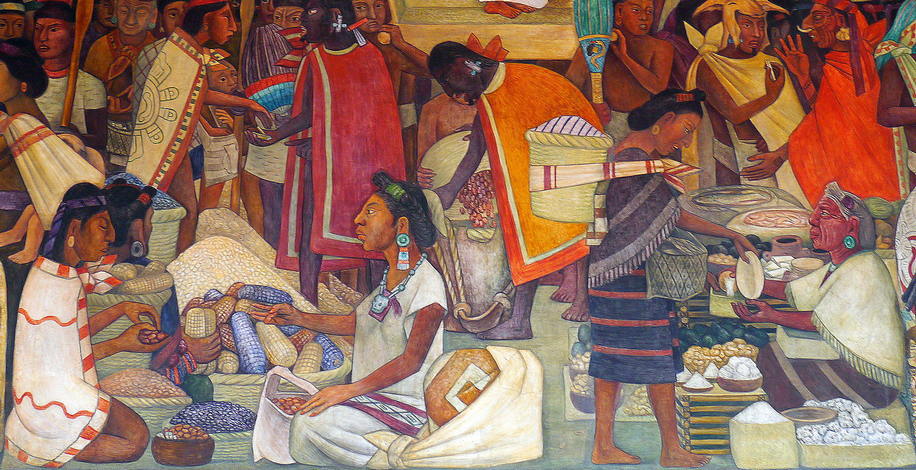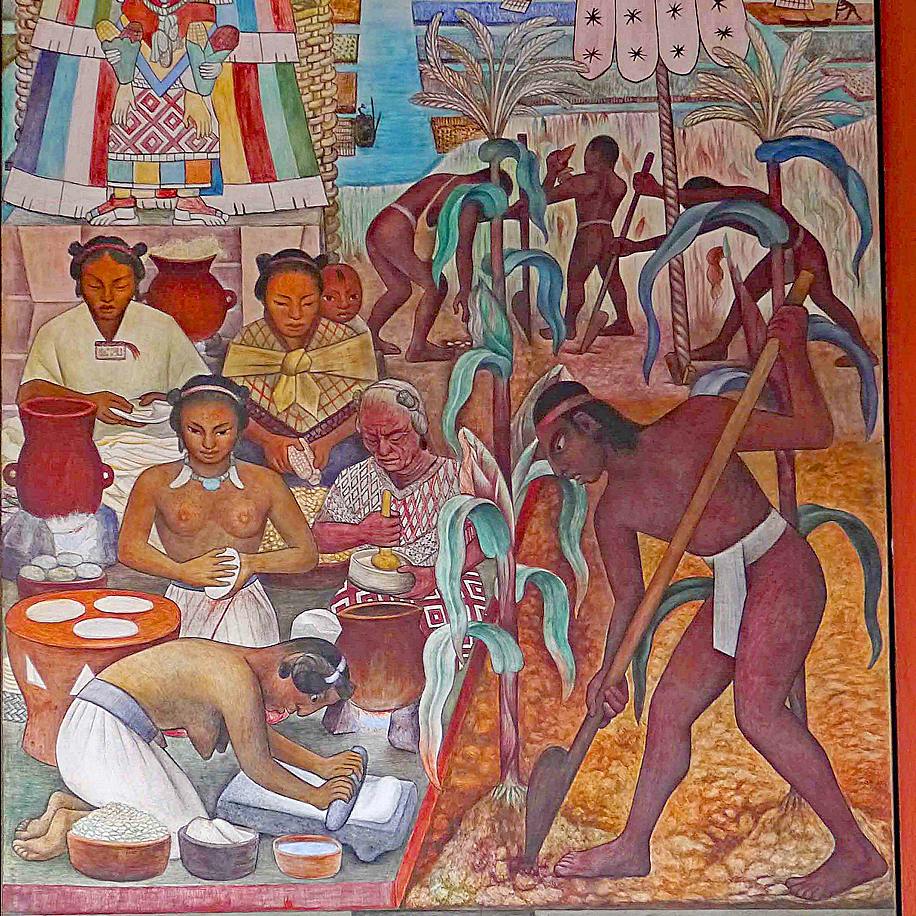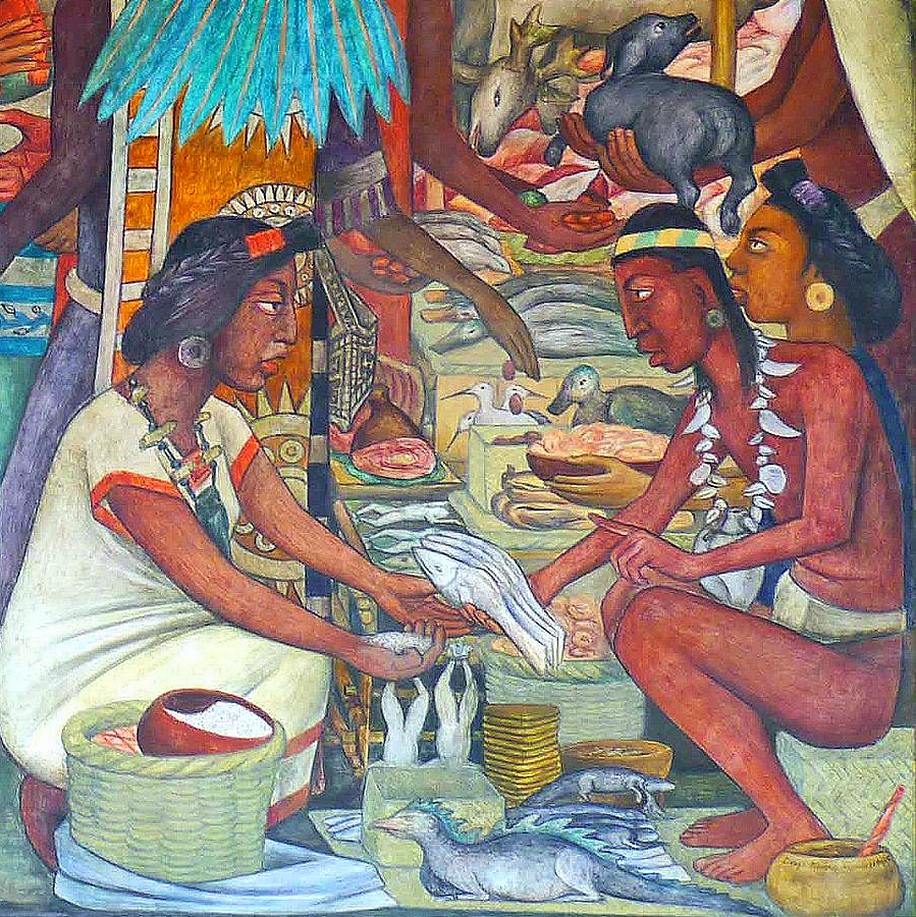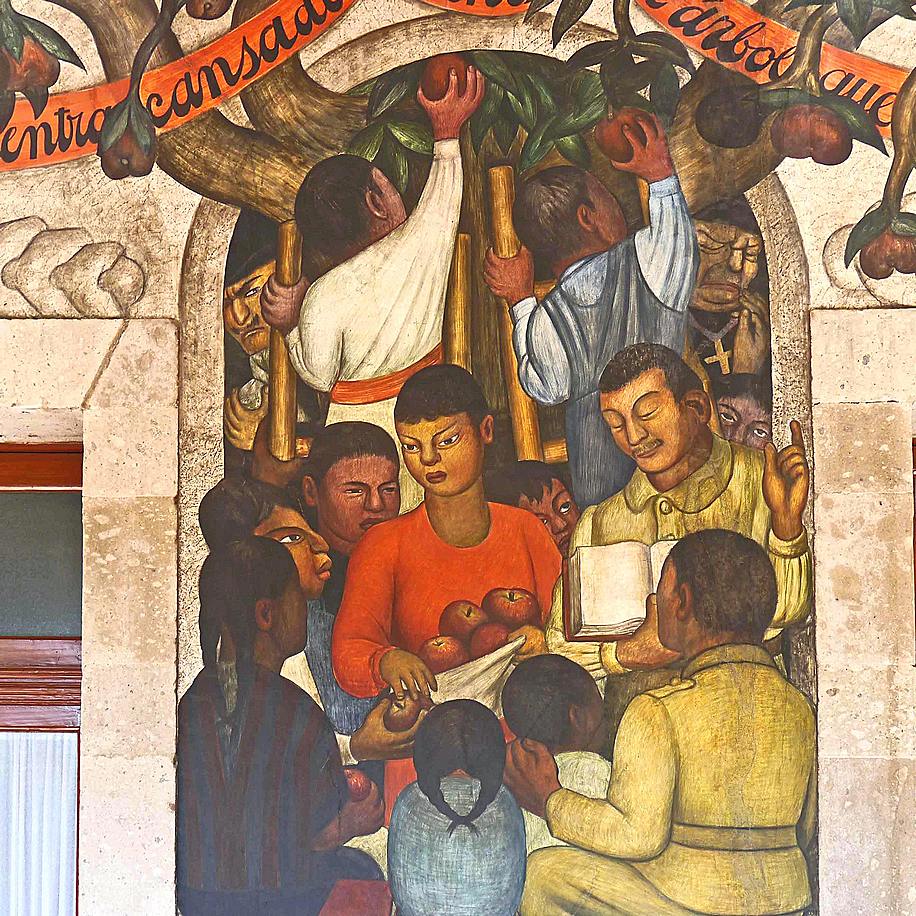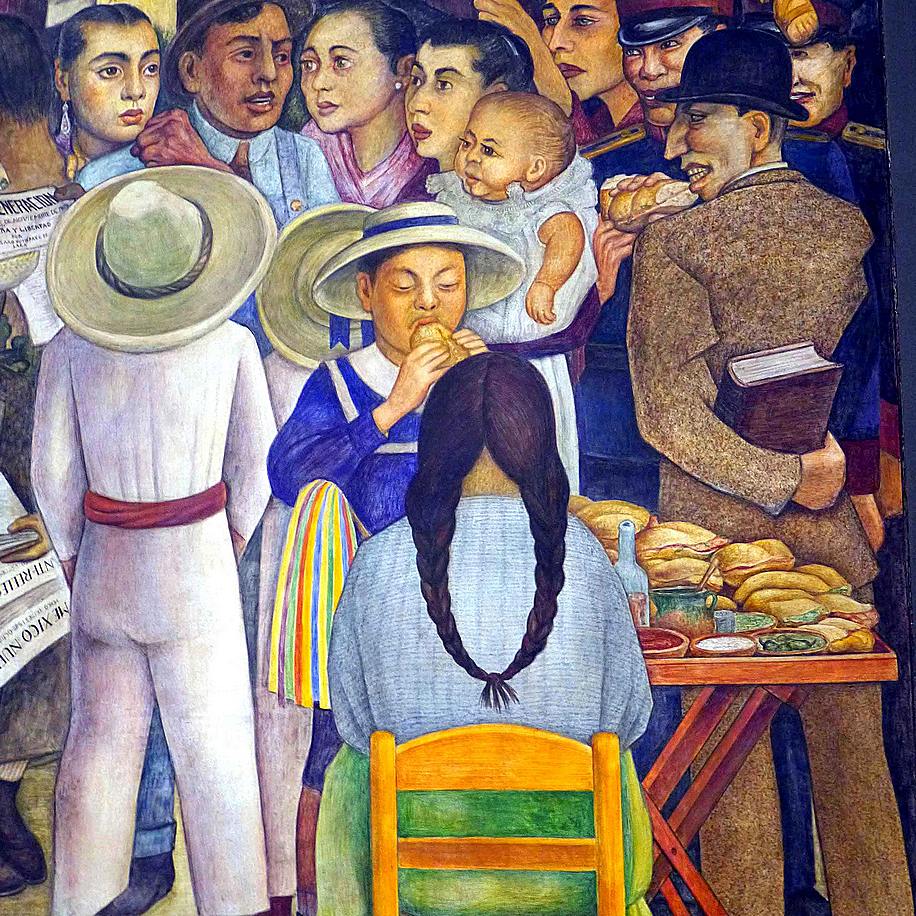Now that we’ve run out of other tidying projects, we’ve been sorting and cleaning up our files of travel photos. We’re using Zoner Photo Studio X (zoner.com) for sorting purposes because it lets us tag large groups of photos with key words. Then we can look at related photos together.
One thing that jumped out at us was that Diego Rivera obsessed about food almost as much as we do. As we looked at our photos of Rivera murals in Mexico City, we were struck that bread, tortillas, and tropical fruits all turned up even more often than the hammer and sickle of the Communist Party. His sympathies may have been with Marx and Lenin, but his truest devotion was to home cooking.
The large mural above is painted on the second level of the Palacio National, the massive government building that dominates the Zócalo. Called “Tianguis de Tlatelolco” (Market of Tlatelolco), it depicts a peaceful preconquest food market in the village of Tlatelolco, now swallowed up by Mexico City’s university district. The left side shows sellers of corn and dried beans, while on the right a woman passes a mass of tortilla dough to a seller of salt and sugar.
Rivera’s murals of Mexican history always hark back to the staff of life, maize. This panel at the Ministry of Education building depicts the whole process—from planting the corn, to grinding it into masa on a stone metate to forming and cooking tortillas on a drum-shaped ceramic grill. Only the nudity of one of the women hints that this is meant as a historical painting of preconquest times. Even if the costumes have changed, in many parts of Mexico the process remains the same.
Tlatelolco fish and meat vendors
Rivera didn’t miss a trick. At first glance, this market stall seems to specialize in fish. But Rivera dutifully includes ducks, geese, deer, and perhaps goats in the background, while the foreground includes frogs and a wonderful chimera of iguana and chicken. (Chickens only arrived with the European settlers.)
The laborers enjoy the fruits, no longer forbiddden
Another image from the Ministry of Education, ‶Frutos″ shows harvesters picking the ripe apples as shadowy figures of a clergyman and man holding a money bag are shoved ever farther back into the shadows. One of the workers holds a book open as another reads from it—Rivera’s insistence that the fruit of knowledge nourishes all the children of the Revolution.
Even the greedy little boy shall eat
This is one of our favorite anecdotal corners of Rivera’s masterful ‶Sueño de una tarde dominical en la Alameda Central″ (Dream of a Sunday Afternoon in the Alameda Central) that he painted for the Hotel Prado in 1946-47. Salvaged from the hotel ruins after the 1985 earthquake, it now fills the Museo Mural Diego Rivera next to the Alameda. This is one of two self-portraits of Rivera as a boy in the painting. (The other has him with Frida and a skeletal Catrina figure.) Much as he loved Frida and he loved the calatrava traditions of José Posada, Rivera loved an empanada even more.

